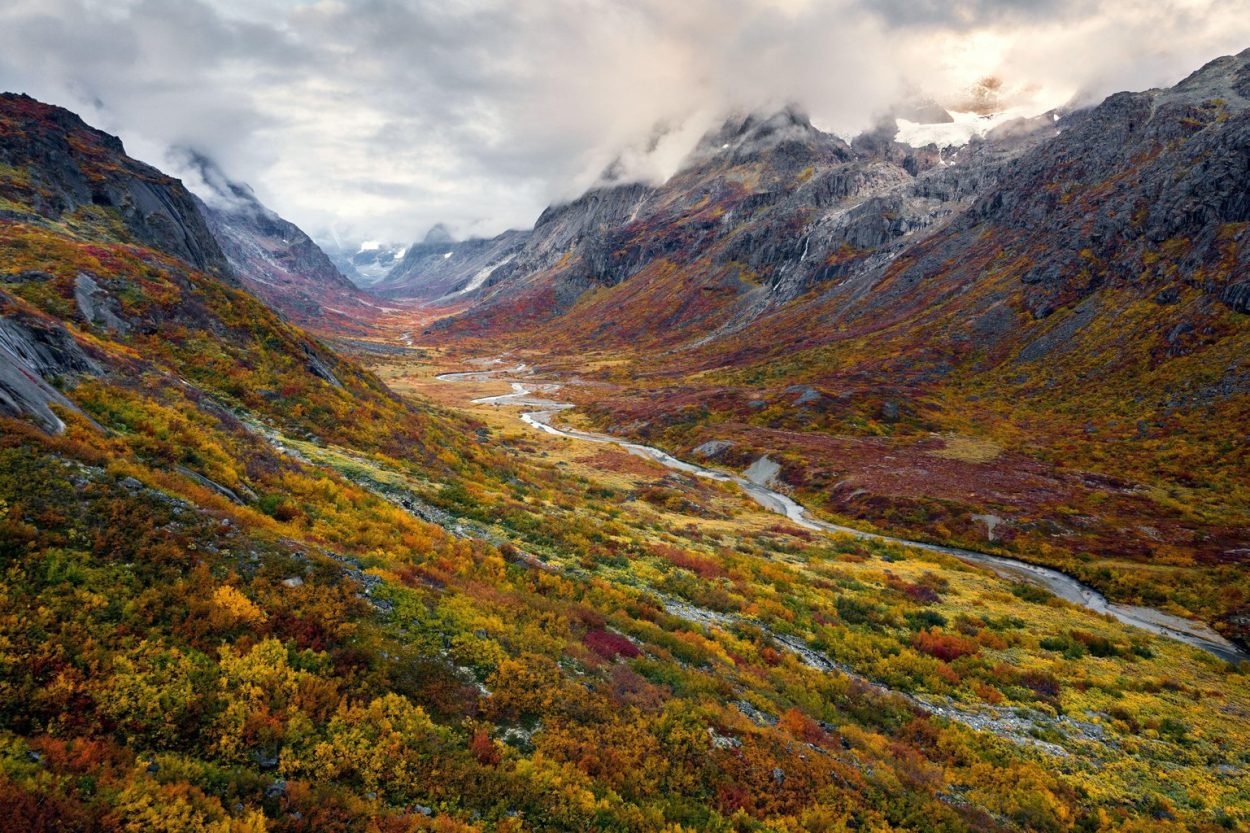The Qinngua Valley, also known as Paradisdalen (meaning “paradise valley”) is a unique biome in southern Greenland and contains the island’s only natural forest zone.
The valley runs for 15 kilometres, flanked by snow-capped mountains rising up to 1.6 kilometres above the valley floor. At the northern rocky extent is a freshwater lake that feeds a stream flowing the valley length into Tasersuag Lake due south.
Unlike the rest of Greenland, which has an Arctic tundra climate, Qinngua Valley has conditions that qualify as a micro-sub-arctic climate, with temperatures reaching above 10 °C (50 °F) for at least one, and at most three months of the year.
This unique ecosystem has enabled over 300 species of plants and trees to grow in the valley, however, it is still considered “species poor” due to the isolated position which makes it difficult for plants with heavy seed to invade.
While there are some places in Greenland where man-made forests have been planted, Qinngua Valley is the only undisturbed biome where nature has found a haven from Greenland’s harsh winters.
Species in the valley include: downy birches (Betula pubescens), gray-leaf willows (Salix glauca), and Greenlandic mountain ash (Sorbus groenlandica), which can grow to heights of up to 7-8 metres.
There is speculation that the lower valleys in Greenland’s southern fjords might have once harboured comparable ecosystems to the Qinngua Valley. However, these ecosystems were likely cleared by Norse settlements, who felled trees for construction and fuel, and allowed their sheep and goats to graze freely.
Previous investigations by archaeologists around the Qinngua Valley area have uncovered remnants of a Norse settlement, including traces of residential structures and livestock pens and byres, situated at the top of Eiríksfjörðr (Tunulliarfik fjord).
An analysis of the pollen assemblage zone suggests that occupation of the site spanned from approximately AD 1020 to 1380. Moreover, the pollen data reveals a decline in birch tree and shrub pollen, accompanied by a slight rise in grass pollen, indicating a reduction in woodland area and an expansion of grasslands during this period.
Some scholars argue that this settlement was actually Brattahlíð, Erik the Red’s estate, but this has since been identified to be the located at Qassiarsuk at the head of the Tunulliarfik Fjord.
Header Image Credit : Alamy – Viktor Posnov
Sources : Edwards, Kevin J., J. Edward Schofield, and Jette Arneborg. “Was Erik the Red’s Brattahlið Located at Qinngua? A Dissenting View.” Viking and Medieval Scandinavia 6 (2010): 83–99. Web. | Department of Geosciences and Natural Resource Management – The Forest Plantations in The Greenlandic Arboretum.





